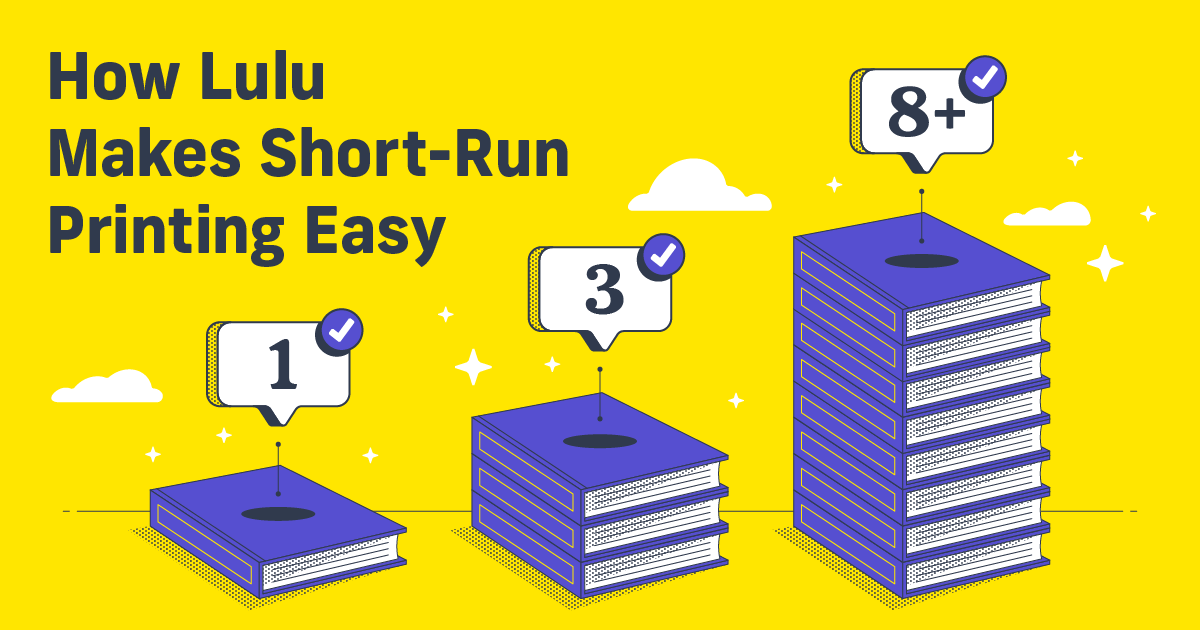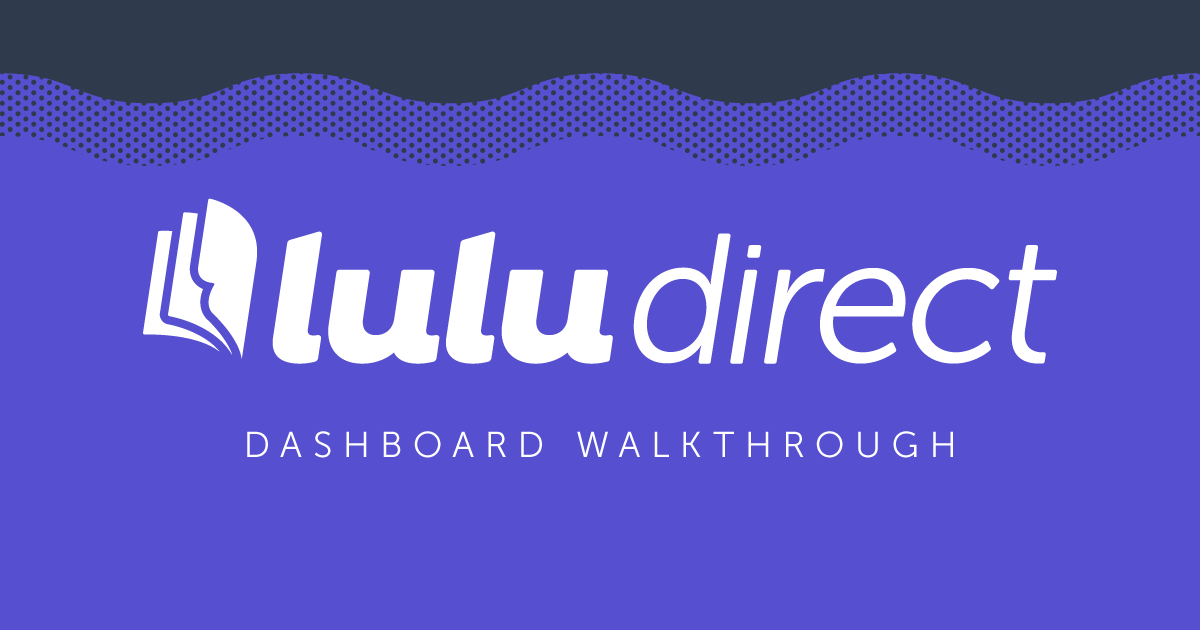5 Ways You Can Sell Your Book to Find Readers and Fans
Writing a book is awesome. It’s a huge dedication of your time and energy, but the result is a permanent Planning, imagining, researching, editing—it’s an arduous but rewarding process. And once that book is written, publishing it brings new challenges like designing pages, creating a cover, and adding all the other content a book requires. Once you’ve put all that work into creating your book you’ve still got the hardest part: selling your book.
The first step is always to build an audience and engage with your fans to get them excited about your book. But that’s book marketing. Today’s post is focused on just the ways to sell your book. Building your audience is key, but you also need to plan where you’ll send your fans to buy the book once you’ve got them interested.
Before You Sell Your Book
There are a few things you need to do before you’re ready to sell your books online or in bookstores.
Most importantly, you need to edit, revise, and polish your book to perfection. Then, please (please), order a proof copy and review that too.
Along with finishing your book, you’ll need an ISBN to apply to your work. Note that each version will need its own ISBN—a standard book launch might include a paperback, hardcover, and ebook version. Each would need its own ISBN.
Finally, you need to read and carefully understand the tax and revenue-related aspects of your preferred ways to sell. If you’re an authorpreneur, you should consider speaking with a tax professional to ensure you’re properly withholding and reporting.
5 Ways To Sell Your Book
You can get inventive and find even more ways to sell your book, but these are the most common routes modern content creators and authors take:
- Sell on Retail Sites
- Sell from the Publisher/Printer
- Sell Directly from Your Own Site
- Sell on Commission Through Bookstores
- Sell at In-Person Events and by Hand
Let’s look closer at each way to sell books and how you can access these sales channels using Lulu to self-publish your book.

Your Free Lulu Account
Create a Lulu Account today to print and publish your book for readers all around the world
Selling Through Online Retailers
The first sales method we’ll look at is the most common: selling through retailers. Among the variety of retail sites you can use, there are three giants:
- Amazon – The biggest and most important retailer for most authors, Amazon is a massive marketplace with numerous features uniquely suited to authors.
- Ingram – As the premiere distribution service, Ingram Content Group is the reason you see books in bookstores, colleges, and libraries.
- Barnes & Noble – One of a few bookstore chains, Barnes & Noble is the goal for many authors and creators aiming for broad appeal.
There are a couple of important ebook retailers too, like Apple Books and Kobo, but the three above represent the biggest online retailers. And you’ll sell the majority of your books online, so take the time to figure out where your audience likes to shop.
Retail sales are impacted by three factors (aside from the quality of your book) that determine whether a shopper buys:
- A compelling description
- Accurate keywords and categories
- User reviews
You Book Description
If your book cover grabs a shopper’s attention, the description has to finish the sale by hooking their interest. Writing effective book descriptions isn’t easy but is a must if you’re hoping to sell.
To make it easier, break your description down into four elements:
- Hook – The first sentence grabs the reader and nearly forces them to keep reading.
- Connection – For nonfiction, the connection should address a pain point the book aims to solve. For fiction, you’ll develop the character’s problem.
- Escalation – Ramp up the importance, risk, or drama the problem represents.
- Bait – Hint at how much more there is between the covers.
Keep your description under 200 words and work in each piece (in order) as I’ve listed them above. Write two or three descriptions (at least) and workshop them with editors, beta readers, or your fans on social media.
Keywords & Categories
While Search Engine Optimization (SEO) is generally targeted at websites, retail sites (in particular Amazon) rely on search to help shoppers find products. This article from Kindlepreneur goes into detail about how to set up and manage your keywords and categories for Amazon.
Optimizing for new buyers on retail sites is a great way to grab their attention. Just remember to treat retail channels as a marketing opportunity too. Earning revenue from a sale is great, but earning a dedicated true fan will result in far more profits in the long term.
User Reviews
Nothing new here: people are more likely to buy anything if others recommend it. Having a good star rating is pretty crucial to maintaining and growing sales.
Collecting reviews can be a challenge though. You’ve got some options, including dedicated professional reviewers like Kirkus. You should also (politely) ask your fans to leave reviews. A good mix of professional reviewers and regular fans will help new readers know you’re selling them quality content.

Create Your Book
Use Lulu's free templates to easily create and publish your book today.
Selling Books From Your Publisher
This is less common—and essentially the same as selling with a retailer. Many self-published books sold on Amazon are published using their KDP service, so you may already be selling directly from your publisher.
Publishing with Lulu gives you access to multiple sales channels. One of those includes the Lulu Bookstore, a simple storefront on lulu.com that only features projects created on Lulu.
Why is this valuable?
For starters, you’ll earn more per sale. Sales on the Lulu Bookstore earn you 80% of the total revenue, significantly more than most other book retailers.
And you’ll be able to offer any kind of book Lulu can print: including coil bound and hardcover books that many retailers don’t offer.
The Lulu Bookstore also gives you the option to make your books unlisted but still available for sale. Only you can share the URL to your book’s product page, letting you offer exclusive versions to select fans.
Direct Sales From Your Author Website
When someone buys your book on a retail site, you probably get an email letting you know. And then once a month or so you get a report with all your sales and the amount you earned.
Now imagine that the sales notification email included the email address, name, and mailing address of the person who bought your book. In the process of checking out, they also subscribed to your newsletter. And, once they’ve finished buying your book, you can receive your funds within hours or days, rather than waiting for a retailer to send you a monthly lump sum payment.
That’s the reality of selling directly. Owning your sales channel opens the door to your audience; you’ll be able to request more information to better market to them and you’ll have the direct relationship to continue growing.
If you’ve got a website and you’re using it to build your brand while earning subscribers to your emails, you absolutely should offer your biggest fans the opportunity to buy directly from you.
Luckily, it’s never been easier. Lulu Direct connects directly to Shopify, Wix, or WooCommerce, integrating print-on-demand into your own website. Automating your book’s printing and shipping avoids the need for inventory or handling—you simply set up Lulu Direct and your books are printed as they’re sold.
Selling direct-to-consumer is a new but important aspect of your author business. As you earn more traffic to your website, your email mailing list will grow and you’ll make more direct sales to your fans.
Selling on Consignment Through Bookstores
Retail distributors like Ingram are how bookstores seek out and purchase stock, but if you have a local store you can connect directly with the store. Selling a few copies on consignment with local bookstores is a terrific way to gain exposure for your work with minimal risk.
Focusing on local bookstores will help you develop relationships—both with the bookstore staff and local readers. Ideally, this will grow into signing and release events at the store.
Commission sales like this aren’t about selling a lot of books. You should be more interested in becoming part of the local reading and writing community. That’s how you’ll make connections that lead to more opportunities, as well as cement local super fans who will buy your next book.

Sell Your Book, Your Way
Sell books on your Wix, Shopify, or WooCommerce website with Lulu Direct.
Or use our Order Import tool for your next book launch.
Selling Your Books by Hand and at Events
Finally, you should always have some copies of your books on hand. Keep a box in your car. Take it places with you.
Selling books by hand, like selling on commission with independent bookstores, is not about making a lot of money. Whether you’re selling your books in person or giving them away at events, you’re sharing your story or expertise with a new audience, building relationships with new readers, and building awareness around your brand.
If your book wows them (and you know it will), you’ve got one more fan ready to buy your next book or take advantage of any other products or services you offer.

Going Wide Versus Exclusivity
These days, there’s really no reason to be exclusive to any platform or retailer. You should make your book available on popular retail sites, you should sell it on your own website, and you should sell it by hand at events or local bookstores.
When you diversify, your book can do more work for you and you’ll avoid being overly reliant on any specific retailer or platform. If you only sell on one retail site and that site decides to remove your books or simply stops operating, you’re out of luck. Going wide protects you from the unpredictability of other websites.
Remember that your book is more than just a product you’re selling. It’s a lead generation opportunity too; each book in a reader’s hands is an opportunity for that reader to talk about you. I know I’m always curious about what my friends and peers are reading. Don’t discount the power of a good recommendation. And once you’ve been recommended, make sure it’s easy for that new reader to get a copy of your book.
Sell your book however you can. Get it into your reader’s hands. There’s no single right way to sell your books. You need to find a combination of methods that reaches your broadest audience while ensuring you’re able to collect the information you need to keep growing your creator business.





